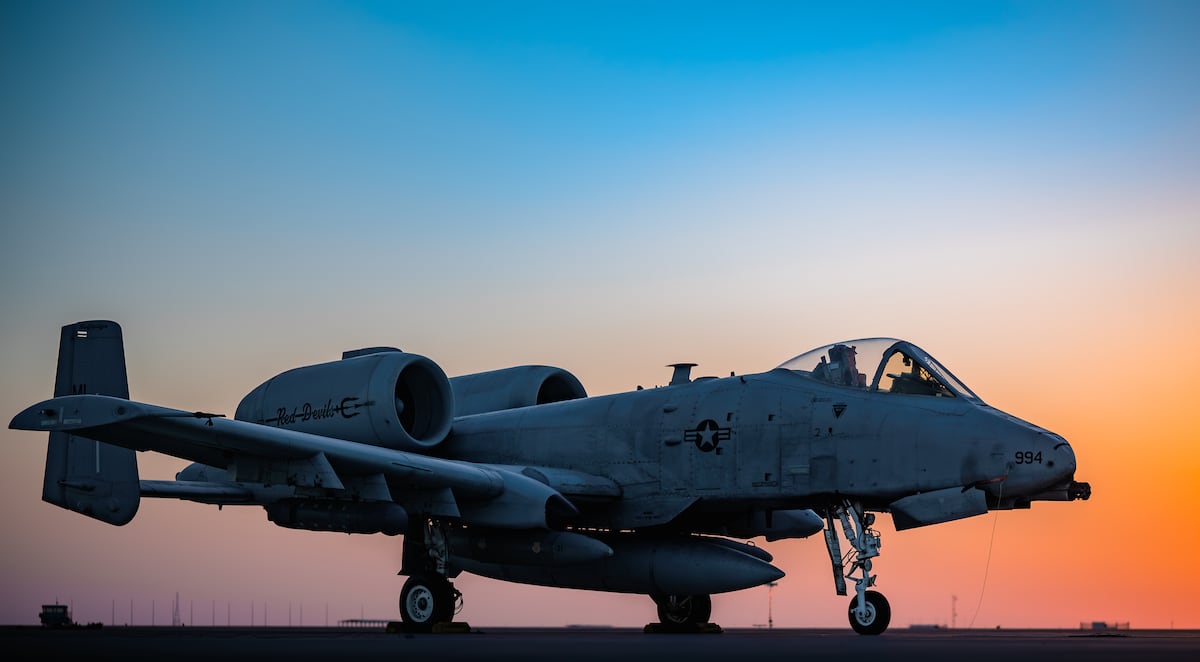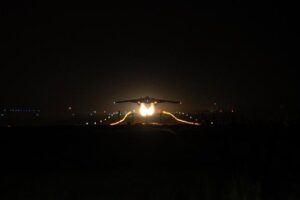The U.S. Air Force is planning a significant overhaul of its aircraft fleet, with a proposal to retire its last 162 A-10 Warthog attack jets by fiscal year 2026. This ambitious move is part of a broader strategy to divest 340 aircraft in total, aiming to modernize and streamline operations.
Compounding this strategy, the Pentagon has announced the cancellation of the E-7 Wedgetail program due to substantial delays and cost hikes. This announcement coincides with the release of the Pentagon’s 2026 budget plan, which proposes a $211 billion discretionary budget for the Department of the Air Force. This budget includes $184.9 billion for the U.S. Air Force and $26.1 billion for the Space Force.
In addition, the Pentagon seeks an extra $38.6 billion in mandatory spending as part of a budget reconciliation bill, with $24.7 billion aimed at the Air Force and $13.8 billion for the Space Force. Should this bill pass, total funding could rise to $249.5 billion—a 17.2% increase from the previous year’s spending. Conversely, if the bill does not pass, the Space Force could face an 8.7% budget cut, leaving Air Force spending nearly unchanged from the $184.1 billion in 2025.
Should Congress approve the proposed retirements, it would represent the largest aircraft retirement in recent history. This initiative aligns with Defense Secretary Pete Hegseth’s directive to cut and reallocate approximately 8% of defense spending, prompting the Air Force to expedite retirement plans for outdated aircraft.
The acceleration of the A-10 retirement plan marks a notable shift from previous timelines, which aimed to phase out the aircraft by the decade’s end. Although Congress has recently agreed to some A-10 retirements, future legislative support for retiring the fleet entirely remains uncertain.
In addition to the A-10s, the Air Force seeks to retire 62 F-16Cs and Ds, 21 F-15Es, 13 F-15Cs and Ds, 14 C-130H Hercules cargo planes, and 3 EC-130H Compass Call electronic warfare planes.
The retirement roster also includes 14 KC-135 Stratotankers, 11 HH-60G combat rescue helicopters, 35 T-1 Texan trainers, 4 UH-1N helicopters, and a B-1 Lancer. Notably absent from this list are the Block 20 F-22A Raptors, which Congress has consistently protected from retirement despite the Air Force’s concerns about their combat readiness.
E-7 on Ice
The proposed cancellation of the E-7 Wedgetail program arose due to its escalating costs, which have increased from $588 million to $724 million. An Air Force official noted the department’s concerns about the E-7’s viability in contested environments. The Pentagon is exploring alternatives, such as utilizing space-based assets and adding more Northrop E-2D Hawkeye aircraft to fulfill the mission.
The Air Force’s budget proposal also features $10.3 billion in spending for the B-21 Raider, a stealth bomber designed by Northrop Grumman capable of carrying nuclear weapons, and $4.2 billion for the LGM-35A Sentinel intercontinental ballistic missile, intended to replace the aging Minuteman III.
The procurement budget for the B-21 is set to rise from $1.9 billion in 2025 to $2.6 billion in 2026, with an additional $2.1 billion in reconciliation spending. This would more than double the Raider’s procurement budget if Congress approves the full spending plan.

The budget also proposes $3.1 billion to continue procuring the F-15EX Eagle II, with plans to purchase 21 of these Boeing-made jets in the upcoming year, compared to 18 in 2025. Conversely, the acquisition of F-35 Joint Strike Fighters is slated to be significantly reduced, with only 47 to be purchased across the Air Force, Navy, and Marine Corps in 2026, down from 74 in 2025.
The Air Force’s F-35A procurement is set to decrease from 44 to 24, with spending on the Lockheed Martin-made jet dropping from $4.5 billion to $3.6 billion. This reduction means the Air Force will acquire only 45 new fighters in 2026, falling short of the 72 annual fighter procurements deemed necessary for fleet modernization.
Funds initially designated for additional F-35s will be redirected toward sustaining the existing jets and securing a robust supply base for operations and maintenance, ensuring that Block 4 upgrades remain on schedule.
The budget also allocates $807 million for the Air Force’s drone wingmen program, Collaborative Combat Aircraft, to expedite development of platforms and autonomy. Additionally, the service requests $73.2 billion in discretionary budget and $4.5 billion in mandatory budget for operations and maintenance, along with $44.3 billion in discretionary spending and approximately $200 million in mandatory spending for personnel. The research, development, test, and evaluation budget totals $46.4 billion, comprising $36.2 billion in discretionary spending and $10.2 billion in mandatory spending.
The R&D budget for the F-47 fighter, or Next Generation Air Dominance, is set to increase from $2.4 billion to nearly $2.6 billion, with an additional $900 million requested in the reconciliation bill, potentially bringing Boeing’s F-47 budget to nearly $3.5 billion.
The Air Force’s total procurement budget request amounts to $36.2 billion, including $26.5 billion in discretionary spending and $9.7 billion in reconciliation bill spending. With reconciliation spending, the procurement budget encompasses $24.8 billion for aircraft, $6.1 billion for missiles, and $784 million for ammunition.
In 2026, the Air Force plans to purchase 14 Boeing-made T-7A Red Hawk trainer aircraft for $362 million. However, no new funding is allocated for the E-7 airborne battle management aircraft amid ongoing debates between the service and Pentagon leadership over the preference for space-based target tracking over airborne platforms.
The proposed budget also restores $387 million for Lockheed’s hypersonic AGM-183A Air-launched Rapid Response Weapon, potentially reviving a program that faced challenges due to several failed tests in recent years.
Procurement spending on the GBU-57 Massive Ordnance Penetrator, or MOP, used for the first time last weekend to strike several Iranian nuclear sites, is expected to decrease slightly in 2026. The Air Force’s budget for the MOP is set to decline from nearly $8.6 million in 2025 to $6.8 million in 2026.






